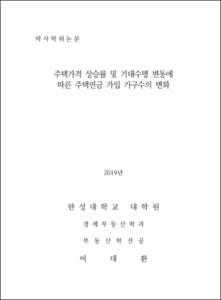주택가격 상승률 및 기대수명 변동에 따른 주택연금 가입 가구수의 변화
= Changes in the numbers of households that joined in the reverse mortgage depending on the housing price increase rate and life expectancy variation
- Files in This Item:
-
-
Download
 200000215923.pdf
기타 데이터 / 1.47 MB / Adobe PDF
200000215923.pdf
기타 데이터 / 1.47 MB / Adobe PDF
-
Items in Repository are protected by copyright, with all rights reserved, unless otherwise indicated.